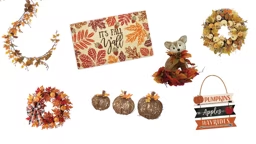With the plethora of home remodeling shows and the promotion and mass discovery of tag sales, truly fabulous flea market finds are dwindling to a rare, coveted few. Even the most unsavvy sellers (who are few and far between) know the difference between Catalina and Fiestaware. Nevertheless, there are still a few ways to find terrific buys at your local flea market or antique shop.

In shopping terms, garage sales and tag sales should be considered wholesale shopping. This is because there is very little overhead expense, and chances are that the sellers are people clearing out their attics who want to get rid of their stuff in the least amount of time (usually over the weekend) and with a minimal amount of effort.
Antique shops, on the other hand, are full retail establishments. Most antique dealers scour garage sales and flea markets for their finds, dust them off, wax them up and display them in their windows with pride and a price tag to match.
Flea markets lie in the gray area between these two. The large flea markets play host to both professional and amateur dealers. Because of this, stock and prices will vary wildly. This is a true hunters' and gatherers' paradise with an abundance of items ripe for discovery. Follow the professionals' lead. They know their stuff--you should too.
The true bargains are really only to be had at the wholesale level. If a piece is in the antique shop, then someone with a trained eye has already discovered it.
Style of Your Own
Most people who collect furniture and accessories gravitate to a particular style or period for personal reasons. More likely than not, it is because something about it brings them joy or reminds them of their childhood. Maybe the collection was started by happenstance and just grew. My own incidental collection began long ago with my love of pineapples.
Growing up in Montana, I found pineapples to be about as exotic as I could imagine. They symbolized tropical locales with swaying palm trees on sun-washed beaches. But they also represented hospitality, which seemed to fit well with house, home and interior design. So, many years ago, when I professed my partiality to the pineapple, I began to receive them as gifts; not the fruit, but the motif. I don't believe there is a decorative item--useful or not--with a pineapple on it that I do not possess. I have swizzle sticks from England, potholders from Japan, wall hooks, plant watchers and a candelabra. A remark made years ago has yielded a steady stream of dividends of pineapple-themed items.
Whatever the reason for your collection, there are keys to shopping success at flea markets and even antique shops.
First, know your product. Zero in on your particular style or period and learn everything you can about it.
Become your own expert.
Growing up in Montana, I found pineapples to be about as exotic as I could imagine. They symbolized tropical locales with swaying palm trees on sun-washed beaches. But they also represented hospitality, which seemed to fit well with house, home and interior design. So, many years ago, when I professed my partiality to the pineapple, I began to receive them as gifts; not the fruit, but the motif. I don't believe there is a decorative item--useful or not--with a pineapple on it that I do not possess. I have swizzle sticks from England, potholders from Japan, wall hooks, plant watchers and a candelabra. A remark made years ago has yielded a steady stream of dividends of pineapple-themed items.
Whatever the reason for your collection, there are keys to shopping success at flea markets and even antique shops.
First, know your product. Zero in on your particular style or period and learn everything you can about it.
Become your own expert.
It will truly pay off to know your Nouveau from your Deco or Mission versus Molesworth. Once you're familiar with your style, finding the right item will be a snap. Impress your friends, influence people and walk away with a bargain, when others thought it was just junk.
Learn the hallmarks of the particular period or style you want to collect.
How is it constructed? What were the typical finishes and what finishes weren't used? Finishes are a guiding factor in determining a piece's value. Is it rare or merely a fake? Knowing your period will help you avoid costly mistakes.
Shape also is important.
Recognizing a period by its silhouette puts you ahead of the surging crowd. It's a great way to immediately ferret out furnishings in the early morning light on the opening day of the flea market. Basically, learn everything you can about your chosen style; this may sound like work, and it is, but it's fun. In the cutthroat world of jumbo flea markets, it is the only way to survive and come out unscathed with a bargain. Shape also is important.

Antique rattan furniture like this restored sofa can run upwards of $3500.
The second way to succeed at a flea market or antique store is to shop "off-trend." Save money by setting your own style. Discover some quirky personal vein and explore it. For example, vintage 1940s rattan is now priced sky-high. Everyone knows about 1950s design; anything vaguely mid-century modern has a price tag to match. By moving forward on the timeline, you can stay ahead of the pack and find the deals yet to be discovered. But if the 1950s have been discovered and the 1960s are very collectible right now, what's left--the 1970s? Exactly.
Design from the 1970s is not as incompatible with log home living as one might initially think. What could be more appropriate for a log home than the classic four Bs of the '70s: butcher block, used brick, Breuer chairs and Boston ferns. Remember, this was a time of getting back to nature, textural fabrics and whole grains.
With this in mind, re-think that tie-dye and applique wall hanging. Wouldn't it look better as a series of throw pillows on that Parsons sofa covered in Haitian cotton you just picked up at your neighbor's garage sale for $15? You were already shopping '70s design and didn't even realize it.
Re-use or Lose
This leads me to the third way of discovering success in the world of flea market shopping: creative re-use of an object. Just about anybody can take a nicked, scratched dresser with peeling paint, put a price tag on it and call it shabby chic.
It would seem that everyone thinks their trash is someone else's treasure, as the prices will testify. But that elusive ability to reinvent uses for items that no dealer would ever come up with, and be able to put an inflated price tag on them, is where true success lies. A rusting gate or single section of an old iron fence could easily be turned into a headboard; or put it on its side, add legs and presto, it's now a one-of-a-kind coffee table. These are obvious transformations, but they're just the beginning. Perhaps that hay rake is long enough to use as a drapery rod. You get the idea.
Simple laboratory beakers work well as liquor decanters. Don't pass them up just because they don't have stoppers. What about using a child's small rubber ball or old cork fishing bobbers to seal them? Still can't find something? What about crabapples for a temporary solution? And if that old Irish pine dresser you have your eye on for the dining room is just out of your price range, wouldn't that chicken coop, egg-laying, nesty thing work better for displaying your collection of decorative serving platters? (And, it's much cheaper.)
It is important to retrain your mind to think outside of the box, to see beyond an item's current use and transform it into something special and unusual. This way of thinking is the ultimate in recycling. Sometimes a fresh paint finish will provide a whole new life for a neglected piece. But expect to pay more for something that is only an obvious transformation away. It is on the second and third levels of transformation that the bargains are found.
True success at the antique or flea market lies within you. Know your product inside and out, shop ahead of the trend and think of unexpected uses for everyday objects. Remember these three important points, and your triumph at the flea market is assured.
It would seem that everyone thinks their trash is someone else's treasure, as the prices will testify. But that elusive ability to reinvent uses for items that no dealer would ever come up with, and be able to put an inflated price tag on them, is where true success lies. A rusting gate or single section of an old iron fence could easily be turned into a headboard; or put it on its side, add legs and presto, it's now a one-of-a-kind coffee table. These are obvious transformations, but they're just the beginning. Perhaps that hay rake is long enough to use as a drapery rod. You get the idea.
Simple laboratory beakers work well as liquor decanters. Don't pass them up just because they don't have stoppers. What about using a child's small rubber ball or old cork fishing bobbers to seal them? Still can't find something? What about crabapples for a temporary solution? And if that old Irish pine dresser you have your eye on for the dining room is just out of your price range, wouldn't that chicken coop, egg-laying, nesty thing work better for displaying your collection of decorative serving platters? (And, it's much cheaper.)
It is important to retrain your mind to think outside of the box, to see beyond an item's current use and transform it into something special and unusual. This way of thinking is the ultimate in recycling. Sometimes a fresh paint finish will provide a whole new life for a neglected piece. But expect to pay more for something that is only an obvious transformation away. It is on the second and third levels of transformation that the bargains are found.
True success at the antique or flea market lies within you. Know your product inside and out, shop ahead of the trend and think of unexpected uses for everyday objects. Remember these three important points, and your triumph at the flea market is assured.











